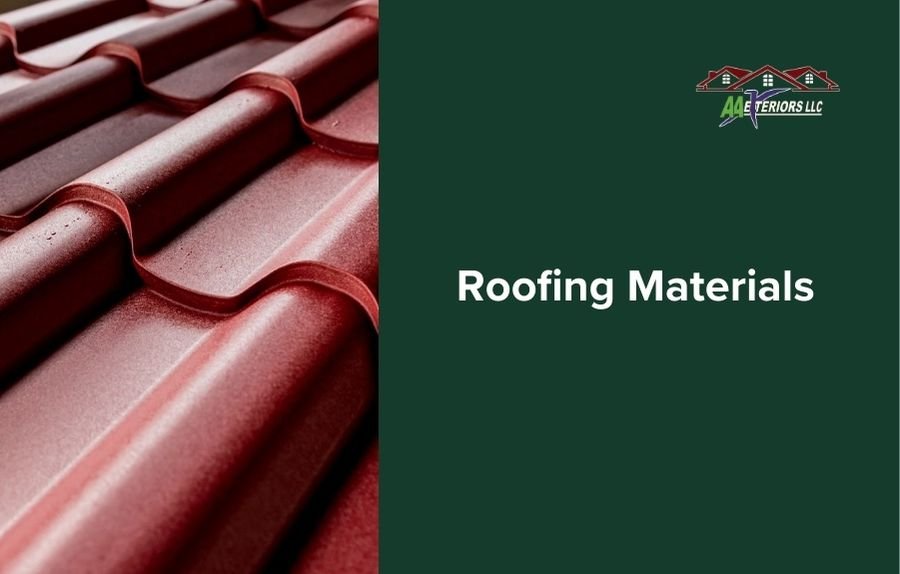Exploring Different Types of Roofing Materials

Asphalt Shingles
Benefits of Asphalt Shingles
Asphalt shingles are the most popular roofing materials in North America due to their affordability and ease of installation.
- Cost-effective: One of the most affordable roofing options.
- Variety of styles: Available in various colors and styles to match any home.
- Durability: Offers good protection against wind, rain, and hail.
Drawbacks of Asphalt Shingles
While asphalt shingles are widely used, they do have some limitations.
- Lifespan: Typically lasts 15-30 years, which is shorter than some other materials.
- Environmental impact: Not the most eco-friendly option due to petroleum content and difficulty in recycling.
Metal Roofing
Benefits of Metal Roofing
Metal roofing materials, such as steel, aluminum, and copper, are known for their durability and energy efficiency.
- Longevity: Can last 40-70 years with proper maintenance.
- Energy efficiency: Reflects solar heat, reducing cooling costs.
- Recyclable: Environmentally friendly and often made from recycled materials.
Drawbacks of Metal Roofing
Despite its advantages, metal roofing has some potential downsides.
- Cost: Generally more expensive than asphalt shingles.
- Noise: Can be noisy during rain or hail unless proper insulation is installed.
Wood Shingles and Shakes
Benefits of Wood Shingles and Shakes
Wood shingles and shakes offer a natural, rustic appearance that enhances the charm of many homes.
- Aesthetic appeal: Provides a unique, natural look.
- Insulation properties: Offers good insulation against heat and cold.
Drawbacks of Wood Shingles and Shakes
However, wood roofing materials require more maintenance and have certain vulnerabilities.
- Maintenance: Requires regular maintenance to prevent rot, mold, and insect damage.
- Fire risk: Higher fire risk unless treated with fire-resistant chemicals.
Slate Roofing
Benefits of Slate Roofing
Slate is a high-end roofing material known for its elegance and longevity.
- Durability: Can last over 100 years, making it a long-term investment.
- Aesthetic value: Offers a sophisticated, classic appearance.
- Fire resistance: Naturally fire-resistant, adding to home safety.
Drawbacks of Slate Roofing
Slate roofing comes with a high cost and specific installation requirements.
- Cost: One of the most expensive roofing materials.
- Weight: Extremely heavy, requiring additional structural support.
- Installation: Requires skilled installation, adding to the overall cost.
Clay and Concrete Tiles
Benefits of Clay and Concrete Tiles
Clay and concrete tiles are popular in warmer climates due to their durability and thermal properties.
- Durability: Can last up to 50-100 years.
- Thermal performance: Excellent at regulating indoor temperatures.
- Aesthetic options: Available in various styles and colors.
Drawbacks of Clay and Concrete Tiles
These materials also have certain limitations to consider.
- Weight: Heavy, requiring reinforced roof structures.
- Cost: More expensive than asphalt shingles, though less than slate.
- Fragility: Can be brittle and prone to breaking if walked on.
Synthetic Roofing Materials
Benefits of Synthetic Roofing Materials
Synthetic roofing materials, such as rubber, plastic, and polymer, are designed to mimic traditional materials while offering additional benefits.
- Cost-effective: Generally more affordable than natural materials.
- Lightweight: Easier to handle and install.
- Durability: Resistant to weathering and impact.
Drawbacks of Synthetic Roofing Materials
Despite their advantages, synthetic materials may not offer the same aesthetic or longevity as natural options.
- Appearance: May not look as authentic as natural materials.
- Longevity: Typically shorter lifespan compared to slate or metal.